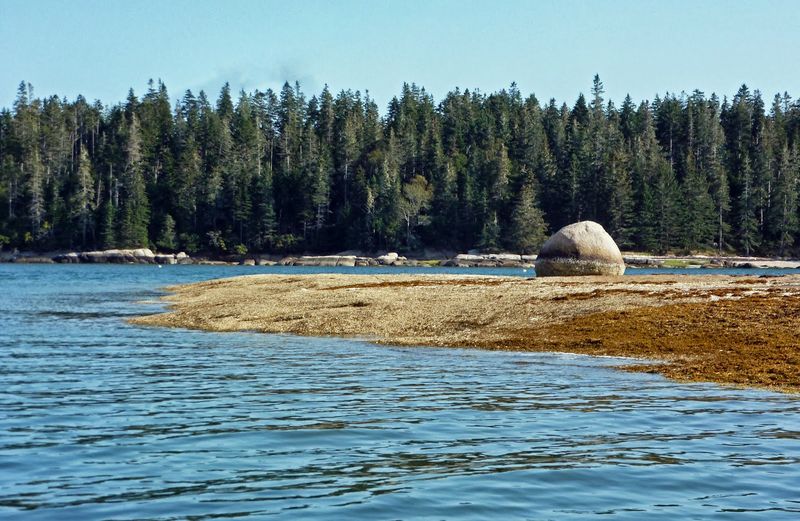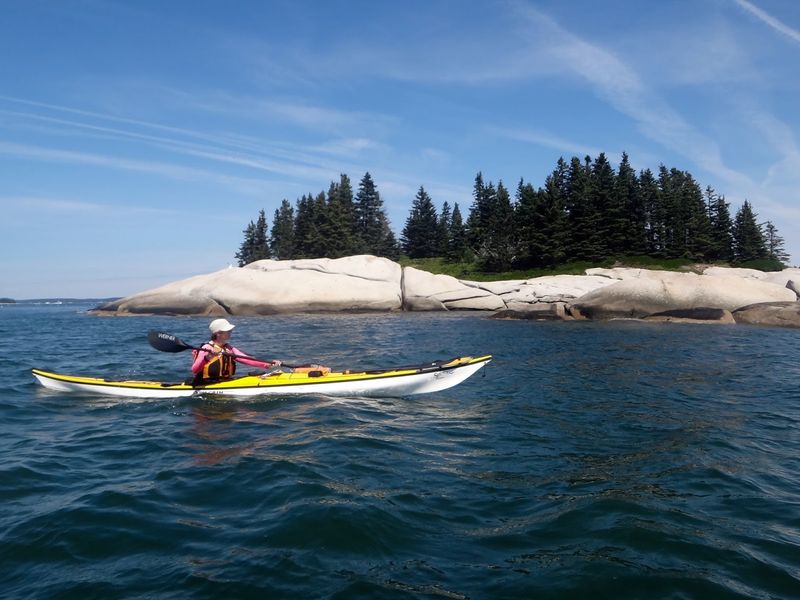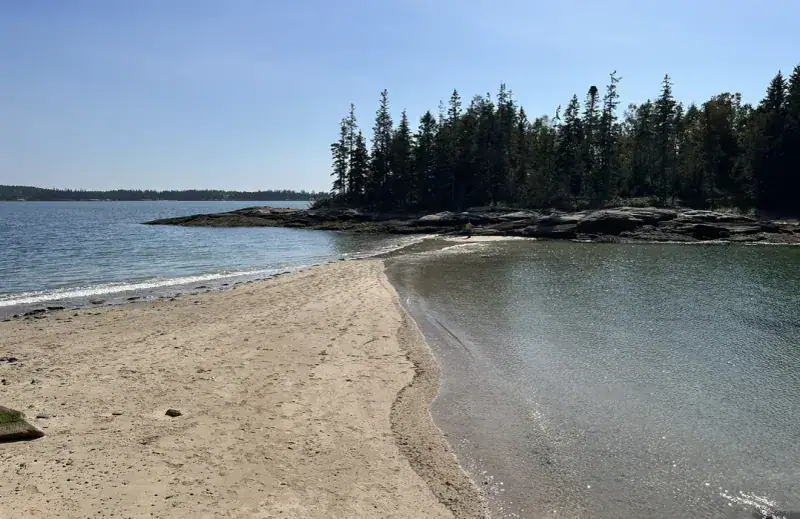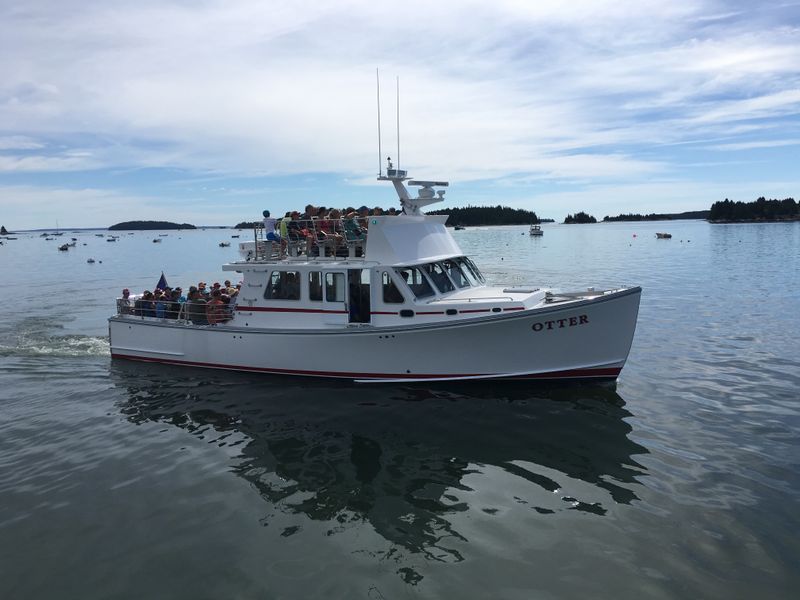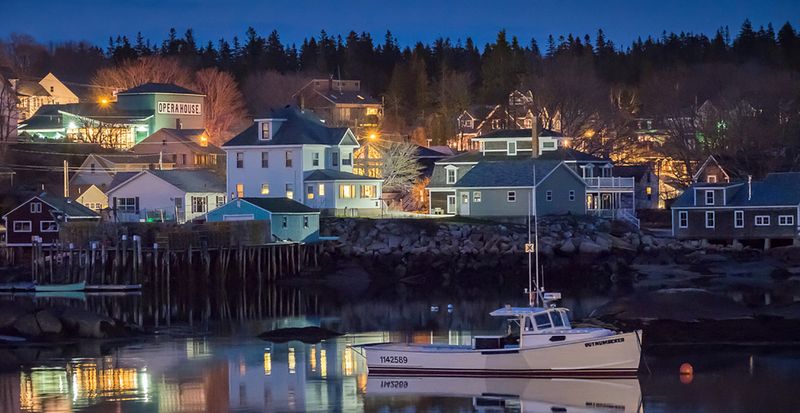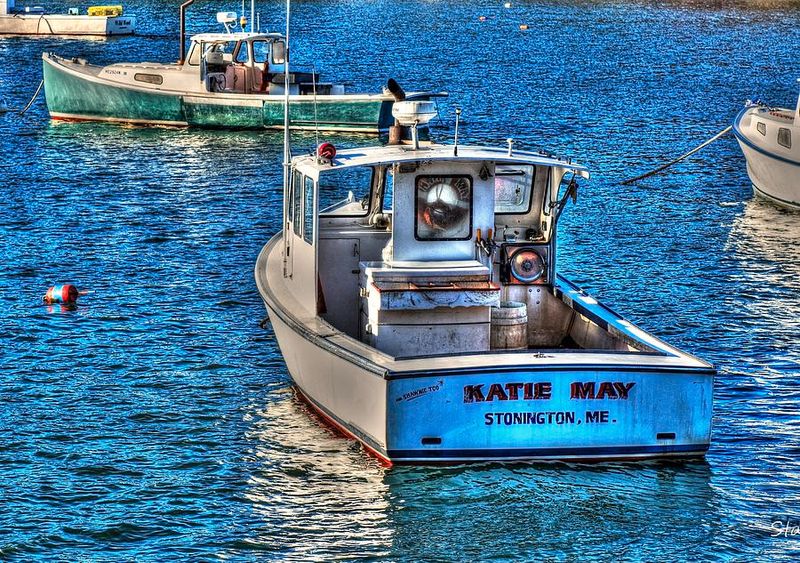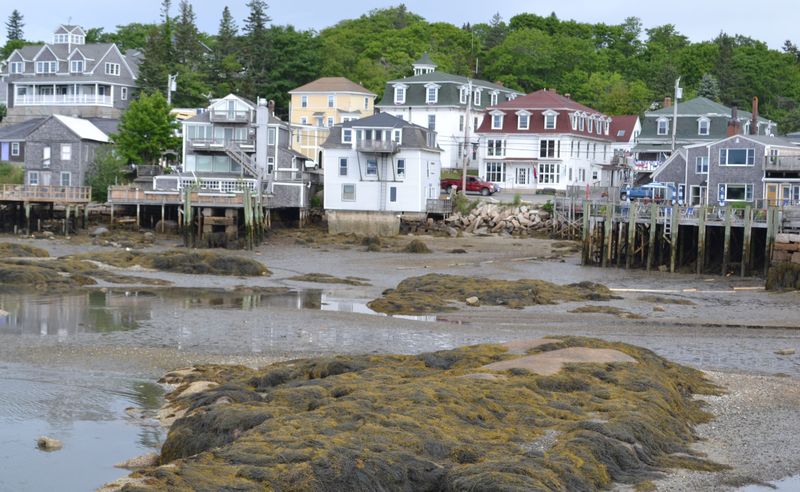Hidden at the tip of Deer Isle, Stonington remains Maine’s best-kept coastal secret. While crowds flock to Bar Harbor and Camden, this working fishing village offers authentic Down East charm without the tourist buses. Picture lobster boats bobbing in a granite-rimmed harbor, surrounded by spruce-covered islands that seem to stretch forever into the Atlantic.
1. That Postcard Harbor—Still Hard at Work
Stonington’s harbor isn’t just pretty—it’s the real deal. This working waterfront ranks as Maine’s top commercial fishing port by dollar value, with millions of pounds of lobster, scallops, and groundfish landed here annually.
Early morning brings the best show as colorful boats chug past weathered granite shores. Steam rises from coffee cups while fishermen prep their gear under pink sunrise skies.
Golden hour transforms the scene into pure magic. Spruce-fringed islands glow in warm light while boats return with their daily catch, creating postcard moments that feel completely authentic.
2. An Island-Speckled Horizon (Merchant Row)
Just beyond Stonington’s harbor lies Merchant Row, a stunning archipelago of over 20 islands scattered between the mainland and Isle au Haut. Many of these gems are protected preserves, perfect for exploration and picnicking.
The view alone is worth the trip—dozens of tree-covered islands dot the blue horizon like stepping stones to the Atlantic. Each island has its own character, from tiny rock outcrops to substantial landmasses with hidden coves.
Maine Coast Heritage Trust protects several islands here, ensuring public access for generations. You can actually paddle out and explore this breathtaking seascape, not just admire it from shore.
3. Kayaker’s Dream Waters
Stonington serves as one of Maine’s premier sea kayaking destinations, offering protected waters and short island crossings perfect for day trips. Merchant Row’s sheltered channels provide ideal conditions for paddlers of various skill levels.
Morning paddles are especially magical when fog lifts to reveal hidden coves and granite ledges. The relatively short distances between islands make island-hopping adventures totally doable, even for intermediate paddlers.
Weather and tides matter here, so check conditions before launching. Local outfitters can provide gear and guidance, helping you navigate safely among these spectacular islands while respecting wildlife and private property.
4. Hike a Granite Quarry to Big Views (Settlement Quarry Preserve)
Settlement Quarry Preserve offers family-friendly hiking with spectacular payoffs. Trails wind across gleaming granite ledges where stone was once quarried and shipped to build cities like Boston and New York.
The relatively easy climb rewards hikers with panoramic views over Webb Cove and the entire Merchant Row archipelago. On crystal-clear days, you can even spot the Camden Hills across Penobscot Bay.
Kids love scrambling over the smooth granite surfaces, while history buffs appreciate learning about the quarrying operations that once dominated this area. The preserve tells Stonington’s industrial story while showcasing its natural beauty.
5. Walk a Sand Bar to a Wild Little Island (Barred Island Preserve)
Barred Island Preserve offers one of Maine’s most unique hiking experiences—a tidal bar crossing that’s only possible at low tide. The adventure begins with a mossy coastal forest trail leading to a pocket beach.
Timing is everything here. Check tide charts carefully because you’ll need low tide to cross the exposed sand bar safely. The island itself is small but wild, perfect for exploration and beachcombing.
Many visitors underestimate how quickly tides change, so plan your return trip carefully. Island Heritage Trust maintains this preserve, ensuring this magical Maine moment remains accessible while protecting the fragile ecosystem.
6. That Dramatic Arrival
Getting to Stonington feels like entering a secret world, thanks to the slender Deer Isle Bridge built in 1939. This graceful suspension bridge carries you high over Eggemoggin Reach’s sparkling waters.
The approach builds anticipation as you cross to Little Deer Isle, then wind through forests and past hidden coves. Each mile feels more remote, more authentically Maine than the last.
The bridge itself is an engineering marvel for its time, spanning 1,080 feet with elegant towers rising 120 feet above the water. That dramatic crossing sets the stage perfectly for discovering Stonington’s timeless charm.
7. A Hush-Quiet Side of Acadia is a Boat Ride Away
From Stonington’s harbor, the mail boat Miss Lizzie connects you to Isle au Haut, home to Acadia National Park’s most remote and peaceful section. Summer service includes Duck Harbor, your gateway to uncrowded hiking trails.
This is Acadia without the tour buses and parking hassles. Miles of trails wind through pristine forests to dramatic clifftop views, often with just seabirds for company.
The boat ride itself is part of the adventure, offering close-up views of Merchant Row’s islands. Check ferry schedules carefully—service is limited, and you don’t want to get stranded on this beautiful but remote island.
8. A Century-Old Opera House with a Beating Arts Heart
Perched on Stonington’s hilltop, the 1912 Opera House proves that great culture thrives in small places. This National Register building hosts an impressive year-round calendar of films, concerts, and live performances.
The intimate venue creates magical evenings where world-class musicians perform just feet from their audience. Local productions share the stage with touring acts, creating a wonderfully eclectic mix.
For such a tiny fishing village, Stonington punches way above its weight culturally. The Opera House serves as the community’s beating heart, bringing neighbors together and attracting visitors who discover that authentic Maine culture runs much deeper than lobster rolls.
9. Small, Sincere, and Wonderfully Low-Key
Stonington’s geography is its blessing—sitting at the very tip of a long peninsula keeps the town peaceful and authentic. There’s literally nowhere else to go, so the pace naturally slows down.
The community proudly calls itself the “gateway to Merchant Row,” and that maritime focus shapes everything from daily rhythms to local conversations. Fishing still matters more than tourism here.
This end-of-the-road location means Stonington stays refreshingly low-key. You won’t find chain restaurants or souvenir shops cluttering the harbor views—just honest Maine coastal life continuing as it has for generations.
10. Granite Legacy Written in Stone
Stonington’s granite built America’s greatest cities, from the Brooklyn Bridge to Boston’s Custom House. Walking through town, you’ll notice the premium stone everywhere—sidewalks, foundations, and harbor infrastructure all showcase local craftsmanship.
The quarrying industry shaped this community for over a century. Italian and Finnish stonecutters brought their families here, creating the cultural diversity that still enriches Stonington today.
Abandoned quarries now serve as swimming holes and hiking destinations, their water-filled basins reflecting sky and trees. The granite legacy lives on in every carefully fitted stone wall and enduring foundation throughout town.
11. Lobster Boats as Living Art
Every Stonington lobster boat tells a story through its colors, gear, and weathered character. These aren’t just fishing vessels—they’re floating sculptures that reflect their owners’ personalities and decades of hard-won experience.
Watch captains maintain their boats with obvious pride, touching up paint and organizing gear with the precision of craftsmen. Each boat represents thousands of dollars of investment and generations of fishing knowledge.
The harbor becomes an ever-changing gallery as boats come and go with the tides. Photographers and artists flock here because these working vessels embody authentic Maine coastal culture better than any museum display ever could.
12. Tides That Shape Daily Life
In Stonington, everything revolves around the tide—when boats can leave, when the sandbar to Barred Island appears, and when the best beachcombing happens. Locals check tide charts like others check weather forecasts.
High tide brings boats home loaded with catch, while low tide reveals tide pools, sea glass, and hidden pathways between islands. The 10-foot tidal range here creates constantly changing scenery.
Visitors quickly learn to plan around these natural rhythms. Restaurant timing, hiking schedules, and ferry departures all dance to the ocean’s ancient beat, creating a slower, more mindful way of experiencing coastal Maine.


